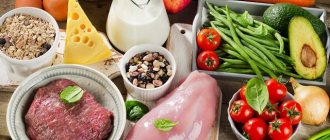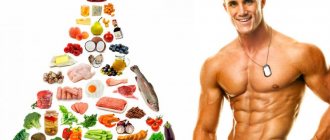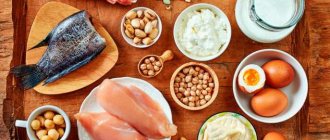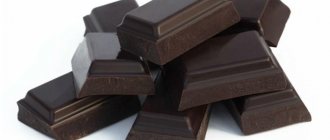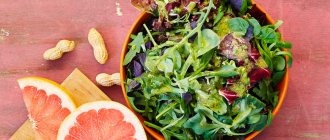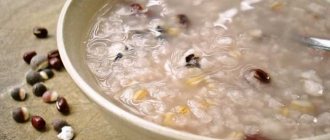The popular 5 spoon diet is one of the interpretations of the idea of fractional nutrition, also known as grazing (fans of grazing (from the English Grazing - plucking grass, the Russian equivalent - “chicken grain by grain”) compare their eating behavior with the natural skills of animals and birds eating in small portions and quite often.
This approach (and the 5 tablespoons diet as one of its variations) will help primarily those whose excess weight is due to overeating and inability to control their portions. Eating in small “doses” with a short break:
- prevents you from getting hungry;
- helps the stomach, spoiled and stretched by gluttony, to restore its normal size;
- normalizes blood sugar levels;
- improves nutrient absorption.
Description of the diet
Unlike common diets, the diet in question only limits the serving size, but not its composition . This means that you can eat as you are used to, but you should strictly monitor portion sizes. Serving size is defined as 5 tablespoons. One of the basic rules is that you need to eat every 3 hours (the so-called fractional meals), and anything, you can have a banana, you can have a boiled chicken breast, as long as the serving size does not exceed - wait, how to measure a banana or chicken with tablespoons?
And there is advice to puree the apples, just so that you can then measure their quantity with spoons, or get a kitchen scale. 5 spoons turn into 150 (according to other sources - 200 g) of any food, and in doubtful cases these values should be used. And the question immediately arises - if they are weighed in grams, what does it have to do with tablespoons?
When eating every 3 hours in 12 hours (say, from 8.00 to 20.00), you will have to eat 5 times; if you are in the habit of drinking kefir or juice at night, a 6th meal is added. Quite reasonable, considering that we eat the most ordinary food (the “5 tablespoons” diet is considered balanced), but less than usual. Then the effect of the diet is determined by how much or how many times less than usual.
In dietetics, it is customary to evaluate food intake (and diets) in kilocalories. There is no doubt that the mythical nutritionists who approved the “5 tablespoons” diet at the congress proceeded precisely from the calorie content of the diet, but for popularization they converted calories into grams. And this is quite possible - there is a formula for a balanced diet for an adult (the diet is designed for 3000 kcal), proposed by Academician A.A. Pokrovsky, where the weight of the total set of products, dishes and drinks (including drinking water) is 2.6 kg. And the 5 spoon diet involves three times less food by weight. If the composition is preserved (and this condition is emphasized in the diet rules), the calorie content of the diet is 1000 kcal.
Well, sometimes it’s less. The Ministry of Emergency Situations has determined the emergency ration for survival to be 450-500 kcal.
A working woman who needs 2400 kcal per day to maintain her weight will be undernourished by 1400 kcal; such a deficit will ensure weight loss of about 1.4 kg in the first week only due to the fat component .
In the future, as the metabolic rate decreases (and this is inevitable on any low-calorie diet), the weekly weights will begin to decrease, tending to 0.4 kg.
On average, if the duration of the diet is not very long, the weekly weight can be considered equal to 1 kg, a fairly typical value for any low-calorie diet.
It is noted that there are many failures on this diet due to the small portions, so it is recommended to start the diet not immediately, but gradually .
For example, according to this method: 1st week - 10 tablespoons, 2nd week - 7 tablespoons, and only from the 3rd week the actual “5 tablespoons” begin. A completely reasonable method is 2000 kcal in the first week and 1400 kcal in the second. As a gentle version of the diet, it would be recommended to stay on 7 spoons for the entire period of following the diet - the likelihood of a breakdown will decrease and the result will be more stable.
Therapeutic nutrition for various diseases
Recommendations for dietary therapy of urinary tract infections are presented as follows:
| Disease | Diet therapy |
| Acute hepatitis, acute cholecystitis | No. 5 “a” until the acute process subsides (up to 7 days), followed by expansion to diet No. 5. In case of severe disease or concomitant pathology of the stomach and intestines, longer use of diet No. 5 “a” is necessary. |
| Chronic hepatitis, chronic cholecystitis | During the period of exacerbation, the principle of nutrition is the same as for acute hepatitis and cholecystitis. During remission, the classic fifth table is recommended for 4-6 months in case of hepatitis to prevent the disease from progressing to cirrhosis of the liver, in case of cholecystitis - to prevent the formation of stones |
| Concomitant lesions of the stomach and intestines | You should eat products of option “a”, which provides mechanical sparing of the gastrointestinal tract, for a period of 7-14 days. Further, the diet can be expanded to a fifth |
| Cirrhosis of the liver | The fifth table with adjustments: when compensating, the diet is enriched with proteins (the daily menu includes up to 120-140 g), lipotropic factors; in case of decompensation, protein is sharply limited (up to 20-30 g); for ascites - reduction of salt, free fluid, transfer to diet No. 10 |
| Dyskinesia of the gallbladder of the hypomotor type | The fifth table with an increase in lipids to 100-120 g due to herbs (increased outflow of bile). Duration of the diet is up to 3 weeks. Has a beneficial effect on extrahepatic cholestasis and constipation |
| Hypermotor type dyskinesia of the gallbladder | Table number 5 with a sharp limitation of fats and egg yolks, the inclusion of foods high in magnesium (buckwheat, millet, soy, bran products, melons, seaweed and seafood), which calms the nervous system |
| Cholelithiasis | Diet five for a long time, in case of exacerbation - option No. 5 “a” |
| Gallbladder removal surgery | Postoperative period - option No. 5 “a” after fasting days. During the recovery period - long-term diet number 5 (for 1-3 years), sometimes - fasting days |
Permitted and prohibited products
In the standard version of the diet, everything is allowed - even bananas and grapes, and fried foods that are forbidden on other diets .
You have already achieved the necessary calorie deficit, and further restrictions are more difficult to bear psychologically and will only harm the body. It was explained above that this will not interfere with weight loss if we proceed from the formula of a balanced diet (i.e., essentially, the usual daily diet of the general table of a sanatorium or rest home), it is only proposed to distribute the daily menu of the sanatorium over 3 days. There are more strict diet options, which provide a fairly general division of foods into permitted and prohibited for all diets . In such a case, the permitted ones usually include:
- fresh, stewed, baked or steamed fruits and vegetables, incl. occasionally bananas and grapes;
- porridge, preferably whole grain;
- lean meat;
- a small amount of butter, vegetable fats, incl. half a spoon of camelina or flaxseed oil to supply the body with omega-3 fatty acids;
- dairy products.
It is recommended to refrain from consuming:
- animal fats (butter is not prohibited);
- carbonated drinks;
- tea and coffee with sweeteners and sugar, a carrier of “empty” calories.
Is it possible to do fasting days during pregnancy? Isn't this dangerous?
Find out from this article whether Turboslim tea really helps to cleanse the body and lose extra pounds.
Table variety 5
The therapeutic fifth table is divided into several types; they differ in diet depending on the disease:
- 5A – recommended for exacerbation of diseases of the liver and biliary system.
- 5 L (F) – recommended for stagnation of bile secretions.
- 5P - indicated for chronic inflammation of the pancreas in the acute stage.
- 5P – recommended after surgery for a stomach ulcer.
- 5Sh – a gentle diet, recommended for long-term use, for one and a half to two years.
Following a diet helps control cholesterol
During dieting, it is important to control cholesterol levels. Since 80% of cholesterol comes from food, you should be aware of foods that increase and decrease cholesterol in the blood.
It is necessary to reduce the amount of such products in the diet:
- chicken eggs;
- offal;
- seafood (shrimp);
- butter;
- fast food;
- dairy products with high fat content.
Steamed chicken
In this case, the emphasis is on:
- peanut butter;
- bran;
- flax seeds;
- green tea;
- nuts;
- red vegetable products;
- garlic;
- black chocolate.
Sample menu for the week
It is convenient to start the diet on Monday. Do not forget that the size of all dishes (including drinks, vegetables and fruits) does not exceed 150-200 g. Below is an approximate diet menu, which you can adjust according to your preferences, adhering to general principles.
| Day of the week | Breakfast | 2nd breakfast | Dinner | Afternoon snack | Dinner | For the night |
| Monday | Hercules on water with apple slices, chicory tea | Bananas | Salad dressed with yoghurt | Stewed vegetables with sour cream | Yogurt with dried apricots | Cup of orange juice |
| Tuesday | Rice/millet porridge with diluted milk, kefir | Muesli with milk | Vermicelli, beefsteak, tea | Carrot salad with cheese | Fruit salad, prune compote | Cup of grapefruit juice |
| Wednesday | Scrambled eggs with tomatoes and cheese, fermented baked milk | 2 sandwiches with meat, cheese, tomato slices | Fish soup | Seaweed salad, bran bread | Steamed fish, mashed potatoes | Cup of carrot juice |
| Thursday | Buckwheat porridge, minced beef, tea | Apple and cabbage salad | Peppers stuffed with minced meat | Kefir, nuts, dried apricots or prunes | Stewed vegetables with beef | A cup of pomegranate juice |
| Friday | Rolled oats and apple pancakes | Salad (any) | Chicken soup | Banana milkshake (prepared in blender) | Boiled chicken breast, mashed potatoes | A cup of apricot juice |
| Saturday | Cake or marmalade, herbal infusion | Kefir, applesauce | Pumpkin casserole | Currant, cherry, strawberry or raspberry jelly | Kiwi, pineapple and pomegranate salad | A cup of any berry juice |
| Sunday | Any porridge and 10 g jam | Banana and berry smoothie prepared in a blender | Stewed root vegetables, shrimp, vermicelli | Tomato stuffed with egg and cheese | Seaweed salad or squid | Dried fruit decoction |
Dish recipes
Rolled oats and apple pancakes .
Grind 100 g of rolled oats into flour and mix with 200 g of kefir. Grate 2 medium apples, add the apples to the oatmeal mixture with kefir and let sit for at least 10-20 minutes. Add 1 egg, 0.5 tsp. baking soda and mix everything well. Bake the pancakes in a heated frying pan using lard or ghee. Banana and berry smoothie . Peel one banana and cut into pieces. Rinse the berries. Grind a banana in a blender for half a minute, add half a glass of berries (blackcurrants or blueberries) and repeat. You can add 150 ml of milk or cream and turn on the blender for another half a minute. Pour the finished smoothie into cups.
Pumpkin casserole . Wash the pumpkins, remove the seeds and remove the skin. Rub the pulp on a coarse grater and place in a container. Melt 100 g butter. Beat 3 eggs with half a glass of milk in a bowl until smooth. Pour in the melted butter, add a pinch of salt. Mix the filling with the pureed pumpkin. Grease a baking dish with vegetable oil, preheat the oven to 200 degrees and bake the dish for 25-30 minutes. Cool the finished casserole and serve.
Doctors' opinions
The main harm of the diet is that the calorie content of the daily diet is too low, leading to a decrease in the level of energy metabolic processes in the body , and the diet can be recommended only if rapid weight loss is necessary for health reasons.
The diet does not provide a way out of it . As usual, it is assumed that the main goal is weight loss, and then the person losing weight is left to his own devices. It is vaguely said that a diet is nutrition for life. It is impossible to imagine this, since losing weight will continue, and it is impossible to live your whole life on 1000 kcal. The most general considerations suggest that you should repeat the diet entry scheme in reverse order - 1st week of entry 7 tablespoons, 2nd week - 10 tablespoons. It is possible that this diet of 2000 kcal or so will help maintain weight throughout life.
results
Results depend on initial body weight and diet. If you follow a diet for at least a month, the weight loss process will occur as follows:
- 1st week. This is the most difficult period, since the body is undergoing restructuring, but the stomach is still enlarged, so you constantly want to eat. By the end of the week you can lose 2-3 kilograms.
- 2nd week. The body has already rebuilt itself, vigor appears. Also 2-3 kilograms are lost.
- 3rd week. Small portions of food are digested quickly, while the body receives all the necessary nutrients. Appetite decreases. Weight loss is about 3 kilograms.
- 4th week. If you manage to hold out for a month, your body will completely get used to the new regime. The volume will noticeably decrease, and the total weight loss will be 7-10 kilograms.


